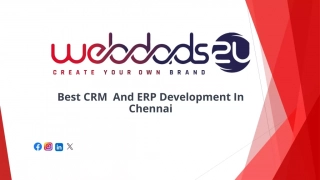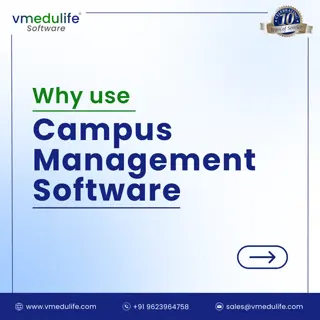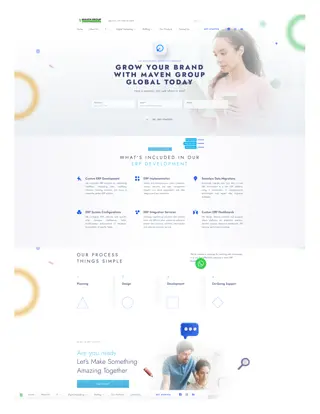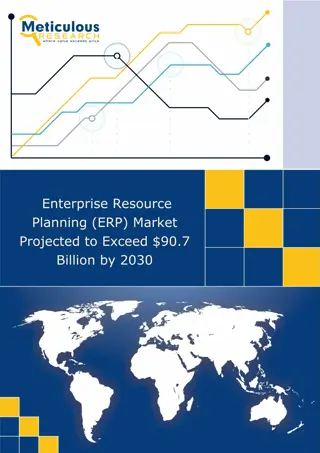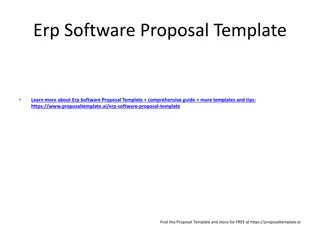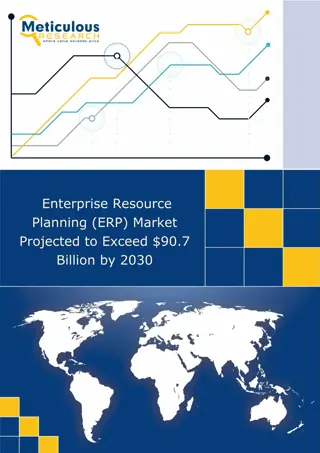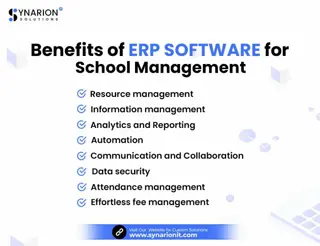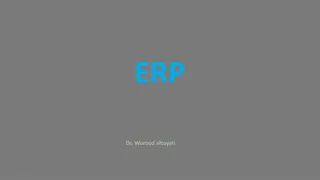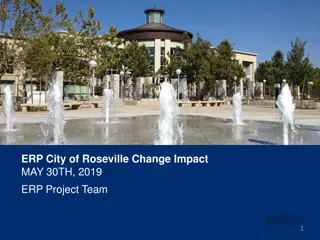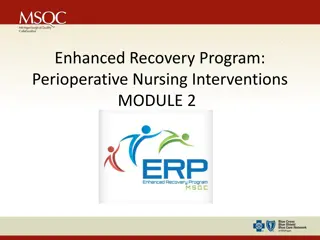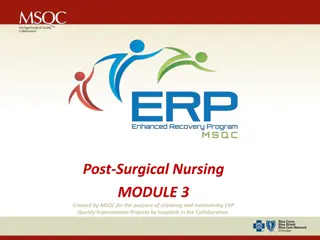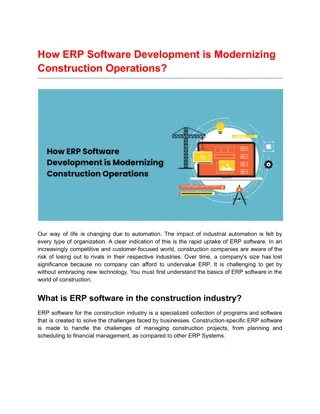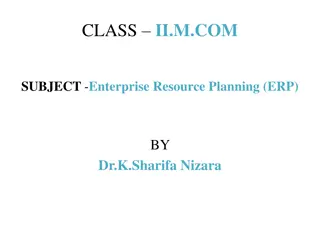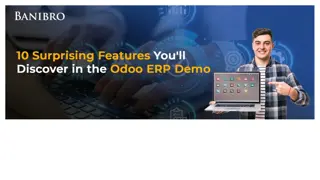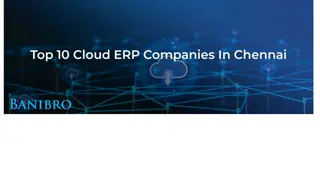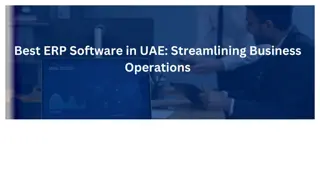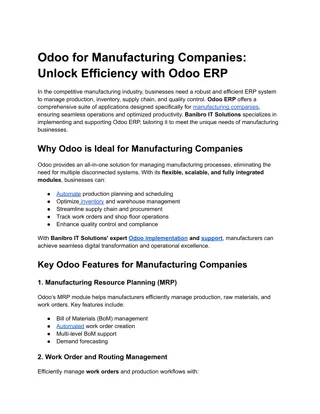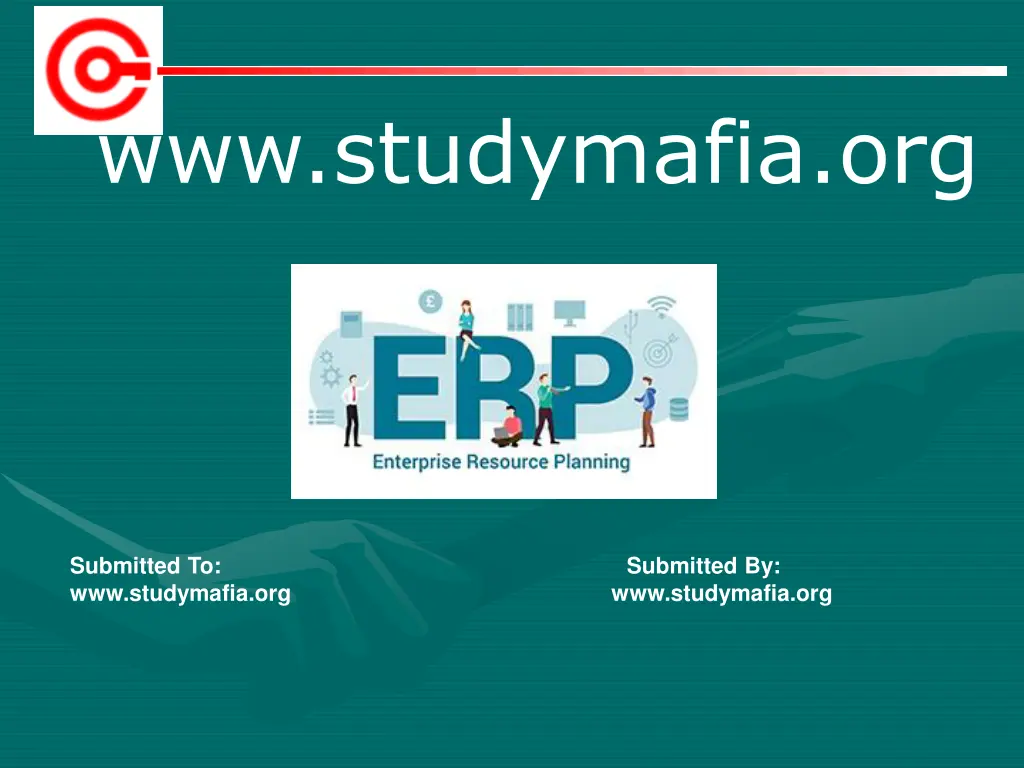
Insight into Enterprise Resource Planning (ERP)
Gain a comprehensive understanding of ERP, including its benefits, costs, implementation strategies, and the significance it holds in modern business operations. Explore the evolution from earlier software solutions to advanced ERP systems and how companies undertake ERP to streamline their processes effectively.
Download Presentation

Please find below an Image/Link to download the presentation.
The content on the website is provided AS IS for your information and personal use only. It may not be sold, licensed, or shared on other websites without obtaining consent from the author. If you encounter any issues during the download, it is possible that the publisher has removed the file from their server.
You are allowed to download the files provided on this website for personal or commercial use, subject to the condition that they are used lawfully. All files are the property of their respective owners.
The content on the website is provided AS IS for your information and personal use only. It may not be sold, licensed, or shared on other websites without obtaining consent from the author.
E N D
Presentation Transcript
www.studymafia.org Seminar On ERP Submitted To: www.studymafia.org www.studymafia.org Submitted By:
Content What is ERP? Earlier used Softwares Why Companies Undertake ERP Cost of ERP How Companies Organize their ERP Projects ? Benefits Of ERP Systems Advanced Business Applications Program ( ABAP ) Conclusion
Enterprise Resourse PLANNING (ERP) Automates tasks necessary to perform a business process. Integrates all departments & functions across a company to create a single software program that runs off one database Replicates business processes in software ,guides employees step-by-step & automate as many procedures Hence, aims to serve as backbone for whole business.
EARLIER USED SOFTWARES 1. ERM (Enterprise Resource Management) :- Encompasses accounting, HR & material management ERP = ERM + APPLICATIONS 2. MRP (Materials Requirements Planning) :-This aim to keep the right inventories on hand & the lines humming.
WHY COMPANIES UNDERTAKE ERP To integrate financial data To standardize manufacturing processes To standardize HR information
COST OF ERP Meta Group recently did a study looking at the Total Cost of Ownership (TCO) of ERP .They included Hardware, software , professional services & internal staff services . The TCO numbers include getting the software installed & the 2 years afterward (maintaining , upgrading & optimizing the system ).
HOW COMPANIES ORGANIZE THEIR ERP PROJECTS ? 3 ways of organizing ERP :-> THE BIG BANG FRANCHISING STRATEGY SLAM - DUNK
(1) The Big - BANG In this, the most ambitious and difficult of approaches to ERP implementation, companies, cast off all their legacy at once & implement a single ERP system across the entire company. Getting everyone to cooperate & accept a new software system at the same time is a tremendous effort , largely because no one in the company has any experience of using it.
(2) Franchising Strategy Suits to large or diverse companies that don t share many common processes . Independent ERP systems are installed in each unit, while linking common processes across the enterprise Systems link together only to share necessary information to get a big picture across all business units
(3) SLAM - DUNK Generally for smaller companies expecting to grow into ERP Focus is just on few key processes Can be used as an infrastructure to support more diligent installation efforts down the road
ERP SYSTEMS These are IT systems meant to serve all IT needs of manufacturing company . Evolved from earlier MRP & MRP II systems MRP systems MRP II systems Computer technique for taking a product schedule as I/P & generating works & purchase orders as O/P. Tended to be so wide in scope giving IT support to all parts of manufacturing company
Benefits Of ERP Systems Timely availability of information. Integration of systems Computational power
ERP II SYSTEMS A technical infrastructure that can support the integration of applications with in the enterprise as well as serve as a connection point for integration with applications run by business partners. Aims to achieve a market-leading position as a strategic IT provider Has the abilityto connect heterogeneous systems
Systems, Applications & Products in Data Processing The world s most popular Enterprise Resource Planning (ERP) software package SAP Single Enterprise System Independent Functional Software Modules
Advanced Business Applications Program ( ABAP ) ABAP is the programming language of SAP. A powerful programming language designed to be both platform and Database independent. After the successful installation, the "ABAPer" will be responsible for the customization, modification and general support of the SAP program. It has many of the features of other modern programming languages such as the familiar C, Visual Basic, and Power Builder.
SAP are categorized into 3 core functional areas: SAP Financial Human Resources
Conclusion While employing an ERP system may be expensive, it offers organizations a cost efficient system in the long run. The organizations should take extra precautions when it comes to choosing the correct ERP system for them.
Reference www.google.com www.wikipedia.com www.studymafia.org

